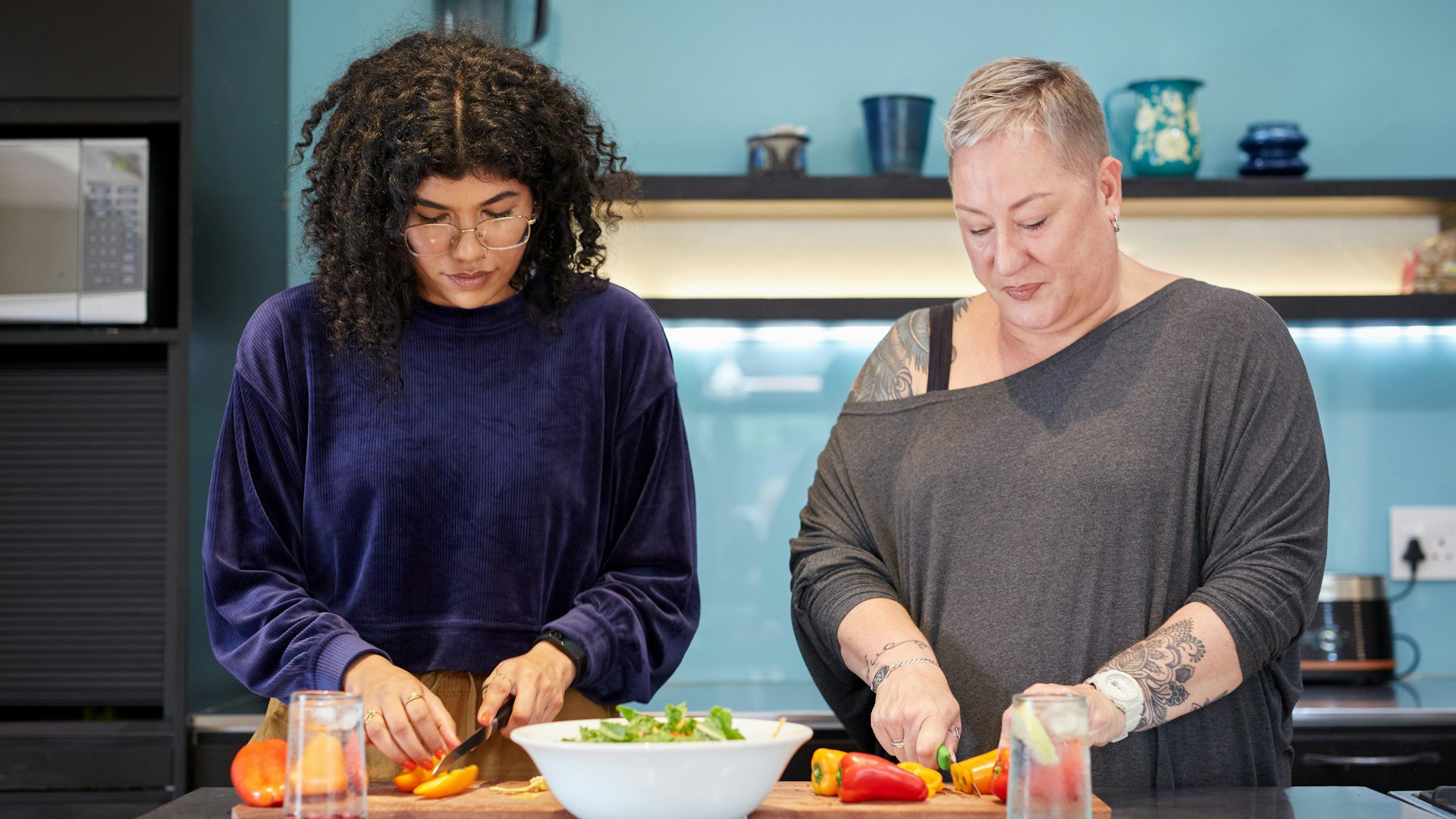Cities Need Infill Community, Not Just Infill Housing
(Source: Unsplash/Sweet Life.)
It's the holiday season, which means more complex cooking projects. For me, that looked like making a double-layered carrot cake from scratch, including a homemade cream cheese frosting. Upon careful consideration of the recipe, I realized I would need an electric mixer, which I do not own. If you’ve read a few of my columns, you know my husband and I (with our recently arrived son) live in a garage flat in Waco, Texas, behind the home of an older couple we know from church.
After busy summers, both households are settling into fall routines and we’ve been around more, meaning more opportunities for conversation, shared meals, and the kind of organic mutual aid you might expect from living close to friends: swapping cooking ingredients, helping take the trash bins out, looking for the dog together when she fled the gated driveway one rainy morning.
So, of course when I realized my need for an electric mixer, it was natural to text Allison and ask if I could borrow hers. And that’s how I found myself on a cool November night carrying a bag full of frosting ingredients to her kitchen and mixing icing in her cobalt blue KitchenAid.
Little moments like this remind me what a gift it is to live near friends, especially since becoming a mom two months ago. More than once, I’ve found the cure to the stay-at-home-blues to be simply carrying Levi over the yard for a spontaneous visit with Allison. I sip tea while she holds him and we chat about recipes we want to try from her new cookbooks or updates on their home renovation projects.
It sounds idyllic because it is: more people should be able to share life in such a fashion, but sadly few do. Along with the crisis of insufficient housing, our neighborhoods are also facing the crisis of social atomization. Almost a century into the Suburban Experiment, evidence abounds that the patterns of city- and neighborhood-building we’ve embraced has led not only to insufficient housing, but to serious social consequences: increasing loneliness, non-existent social ties, and growing polarization, to name a few. Not just that, but the social expectation of self-sufficiency resigns us to spending growing portions of our time to money-making so we can all buy our own tool sets, lawn mowers, and KitchenAids.
We can see the social consequences of this failed experiment all around us, from the seemingly harmless but socially-ill-attuned “phone-walker” afflicting the sidewalks of dense cities to last year’s unexpectedly higher rates of suicide. I’ve seen it in the customer service industry, with young employees hardly able to answer a basic question or smile while taking an order. I also see it on the road with alarmingly frequent instances of red-light running and aggressive speeding on residential streets. And let’s not even mention the comment sections on any of our most popular news or social media platforms.
Right now, countless cities around the country are facing a housing crisis stemming from artificially constrained supply, outdated building regulations and a rigid financing system that makes it hard for developers and builders to quickly respond to the growing demand. Allowing small-scale builders to erect infill housing like the ADU that my family lives in is part of the solution and we’re seeing many cities move in this direction, a good sign.
We’re tackling the “nuts and bolts” aspect of the housing shortage by making it easier to build more housing. Imagine if we began to channel similar creativity into addressing the social breakdown, too, seeing incremental housing as a platform for building community? Imagine if older couples began inviting newly-weds they knew to live in a startup home behind them and invited them over for dinner once a week? Or if a growing family with little kids rented out their ADU to a trusted older couple who would undoubtedly benefit from spending time with children? What if friends intentionally moved closer to each other and shared expensive kitchen gadgets and yard tools—heck, even cars?
These are the simple actions that could allow us to build social ties and push back against this atomization. But I don’t think this will happen as a result of policy. It will happen because ordinary people like Allison and her husband decide to open up their homes and their lives, because they choose to intentionally share both. That takes courage, but that’s simply a prerequisite for living these days…let alone for recovering from the suburban experiment.
RELATED STORIES
#BlackFridayParking
Even during the busiest shopping season, we have too much parking. It's time to get rid of the regulations that make it so.






Tiffany Owens Reed is the host of The Bottom-Up Revolution podcast. A graduate of The King's College and former journalist, she is a New Yorker at heart, currently living in Texas. In addition to writing for Strong Towns and freelancing as a project manager, she reads, writes, and curates content for Cities Decoded, an educational platform designed to help ordinary people understand cities. Explore free resources here and follow her on Instagram @citiesdecoded.